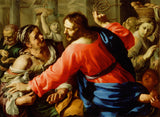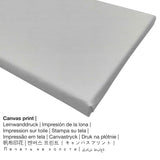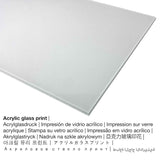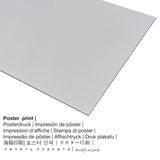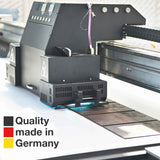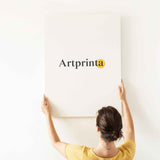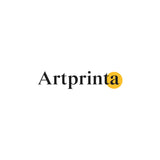Bernardino Mei, 1655 - Kraịst na-asachapụ ụlọ nsọ - mbipụta nka mara mma
Ụtụ gụnyere. Mbupu gbakọrọ na ndenye ọpụpụ.
Artwork description by The J. Paul Getty Museum website (© - Ụlọ ihe ngosi nka nke J. Paul Getty - Ụlọ ihe ngosi nka nke J. Paul Getty)
Upon seeing the Temple of Jerusalem turned into a marketplace by moneychangers and traders in sacrificial animals, the whip-carrying Jesus bursts out in anger. With an animated composition laid out on diagonals, and monumental figures reeling, Bernardino Mei's canvas aptly portrays Christ's righteous fury.
Mei borrowed the half-length figures and their unique, unidealized faces from Caravaggio's naturalistic followers. From the Baroque whirls of Gian Lorenzo Bernini's sculpture, he took the multiple twisting movements, then added a silvery light to harmonize the colors.
Baroque artists often painted this subject because of its tumultuous action and intense emotion. Italians of the 1600s tended to interpret the theme as symbolic of the contemporary reform of the Catholic Church.
In 1655 the Italian painter Bernardino Mei made this artpiece. The work of art is in the the Ụlọ ihe ngosi nka nke J. Paul Getty collection. With courtesy of: The J. Paul Getty Museum (nwere ikike - ngalaba ọha).Ihe kredit nke ọrụ nka bụ: . Ọzọkwa, itinye n'usoro odida obodo format ya na oke nke 4: 3, nke pụtara na ogologo bụ 33% ogologo karịa obosara. Bernardino Mei was a engraver, painter, whose art style can mainly be classified as Baroque. The European artist lived for 64 afọ - a mụrụ n'afọ 1612 in Siena, Siena province, Tuscany, Italy and died in 1676.
Kedu ụdị ngwaahịa ngwaahịa ka amasị gị?
Anyị na-enye ihe dị iche iche dị iche iche na nha maka ngwaahịa ọ bụla. Anyị na-ahapụ gị ka ịhọrọ n'ime ụdị ndị a:
- Kwaaji: A printed canvas applied on a wooden stretcher frame. How can I hang a canvas print on the wall? Canvas prints are relatively low in weight, which implies that it is easy to hang up the Canvas print without the support of any wall-mounts. That is why, canvas prints are suited for all types of walls.
- Mbipụta enyo acrylic: The print on acrylic glass, often described as a print on plexiglass, transforms your favorite original artwork into wonderful décor. With a glossy acrylic glass art print sharp contrasts and minor painting details become more identifiable because of the subtle gradation in the picture.
- Aluminom dibond mbipụta (ọla): An Aluminium Dibond print is a material with an outstanding effect of depth - for a modern look and non-reflective surface structure. This UV print on aluminium is the most popular entry-level product and is a sophisticated way to display art reproductions, since it puts the viewer’s attention on the artwork.
- Poster (akwa akwa akwa): The poster print is a printed canvas paper with a fine finish on the surface. Please note, that depending on the size of the canvas poster print we add a white margin of something between 2-6cm around the artwork in order to facilitate the framing with a custom frame.
Ose okwu
| aha: | Bernardino Mei |
| Aliases: | Mei pittore senese, Mej, mei barnardino, Mei, Mei Senese, Mei Bernardino, Bernardino Mei Senese, Bernardino Mei |
| okike nke onye nka: | nwoke |
| Nationality: | Italian |
| Ọrụ nke onye na-ese ihe: | onye na-ese ihe, onye na-ese ihe |
| Country: | Italy |
| Nkewa onye nka: | nna ukwu ochie |
| Ụdị nka: | Baroque |
| Nwụrụ anwụ: | 64 afọ |
| Amụrụ n'afọ: | 1612 |
| Ebe omuma: | Siena, mpaghara Siena, Tuscany, Italy |
| Afọ ọnwụ: | 1676 |
| Obodo ọnwụ: | Rome, Rome Province, Lazio, Italy |
Data ndabere gbasara nka nka pụrụ iche
| Aha nka: | “Kraịst Na-asachapụ Ụlọ Nsọ” |
| Nhazi nka: | sere |
| Otu sara mbara: | nka ochie |
| Nhazi oge: | 17th narị afọ |
| Afọ nka: | 1655 |
| Afọ nka: | ihe karịrị 360 afọ |
| Ụlọ ihe ngosi nka / ebe: | Ụlọ ihe ngosi nka nke J. Paul Getty |
| Ebe ngosi nka: | Los Angeles, California, Njikota Obodo Amerika |
| Ibe weebụ: | Ụlọ ihe ngosi nka nke J. Paul Getty |
| License: | ngalaba ọha |
| Site n'aka: | Ụlọ ihe ngosi nka nke J. Paul Getty |
Ngwaahịa a
| Nkewa edemede: | ọmarịcha nka |
| Usoro mmeputakwa: | mmeputakwa n'ụdị dijitalụ |
| Usoro nhazi: | UV kpọmkwem obibi |
| Nlụpụta: | Germany |
| Stockdị ngwaahịa: | a na-achọ |
| Eji ngwaahịa emebere: | mgbidi mma, art ebipụta gallery |
| Nhazi onyonyo: | usoro odida obodo |
| Njikwa oyiyi: | 4: 3 ogologo: obosara |
| Pụtara nke akụkụ akụkụ: | ogologo bụ 33% ogologo karịa obosara |
| Nhọrọ akwa: | ígwè obibi akwụkwọ (aluminium dibond), ebipụta canvas, mbipụta akwụkwọ mmado (akwụkwọ kwaaji), mbipụta iko acrylic (nwere ezigbo mkpuchi iko) |
| Nha n'arọwa n'elu ihe ndọtị (mbipụta akwa akwa): | 40x30cm - 16x12", 80x60cm - 31x24", 120x90cm - 47x35", 160x120cm - 63x47" |
| Mpempe iko acrylic (nwere ezigbo mkpuchi iko) nha: | 40x30cm - 16x12", 80x60cm - 31x24", 120x90cm - 47x35", 160x120cm - 63x47" |
| Mpempe akwụkwọ mmado (akwụkwọ kwaaji) nha: | 40x30cm - 16x12", 80x60cm - 31x24", 120x90cm - 47x35" |
| Aluminium dibond ebipụta (ihe aluminium) dị iche iche: | 40x30cm - 16x12", 80x60cm - 31x24", 120x90cm - 47x35" |
| Igwe onyonyo: | enweghị etiti |
Nkwupụta iwu: We try whatever we can in order to depict our products as accurate as possible and to demonstrate them visually in our shop. Although, the colors of the print products, as well as the print result may vary somehwat from the image on your device's monitor. Depending on your screen settings and the condition of the surface, not all colors are printed as exactly as the digital version on this website. Since our fine art prints are processed and printed by hand, there might as well be minor variations in the size and exact position of the motif.
© Copyright - ikike ọgụgụ isi nke | Artprinta (www.artprinta.com)

